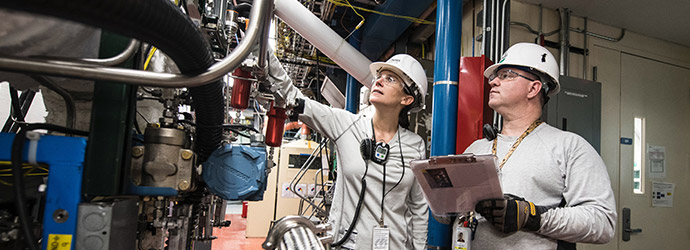Process Safety Management Program
PSM Program Development
The major objective of process safety management (PSM) of highly hazardous chemicals is to prevent unwanted releases of hazardous chemicals. An effective process safety management program requires a systematic approach to evaluating the whole chemical process. Industrial Consultants provides customized Process Safety Management consultation, development and training services that will help you stay compliant within all 14 elements of PSM.
Get A Free Consultation
Process Safety Management Program
Industrial Consultants, LLC completes a turnkey basis PSM program for our clients. Each element of the program is tailored specifically to your facility. Or if your facility has an existing PSM program, we can provide a complete review of the elements. In addition to the review of the programs, Industrial Consultants, LLC also offers the following PSM services:
What is Process Safety Management?
Many companies throughout the United States have chemicals in use at their respective facilities that can threaten employees and the communities surrounding them. These chemicals pose a potential threat when part of the process that uses the chemicals has an engineering or administrative failure that will release the chemical into the surrounding area.
The companies using these chemicals must anticipate an eventual failure that can release the chemical. The causes are many, due to the complexity of the systems in place, to produce a product or sometimes a distribution of products to the general public. One example of a process that can fail is an ammonia refrigeration system, which is used for refrigeration and product storage at the facilities.

The OSHA PSM program is CFR 1910.119 and the EPA RMP 40 CFR Part 68. Both of these programs have requirements within the body of the regulations that your facility must be in compliance with or there may be consequences. The consequences could include an injury, or even a fatality, which affects the safety of the operators and employees at the facility.
The 14 Elements of PSM
Employee Participation (c)
Process Safety Information (d)
Operating Procedures (f)
Contractors (h)
Pre-Startup Reviews (i)
Mechanical Integrity (j)
Hot Work Permit (k)
Management of Change (l)
Incident Investigation (m)
Emergency Planning and Response (n)
Compliance Audits (o)
Trade Secrets (p)
Process Safety Management Program FAQs
chemicals is to prevent unwanted releases of hazardous chemicals especially into locations that could expose employees and others to serious hazards.
Related Services
Articles on Process Safety Management

Citation Watch: Minnesota Co-op Fined $120,000 for Violation of the Risk Management Program


